Spansk skogssnigel
Spansk skogssnigel
Latinskt namn: Arion lusitanicus
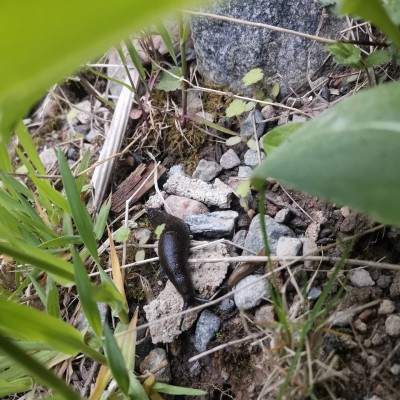
Foto: Dmitrii Plekhanov, Fiskars, Finland
Overview:
Spanish slug is one of the most destructive slugs in Finland and the whole of Europe. An invasive species that has occupied and invaded biotopes in many European countries since the 1950s and has already reached Norway, Sweden and Finland. The first observation in Finland was in 1990. It is a danger to all native species of animals and plants that it can reach, and which are slow enough to be eaten by it, both local slugs and the offspring of small birds in the nests suffer from it.
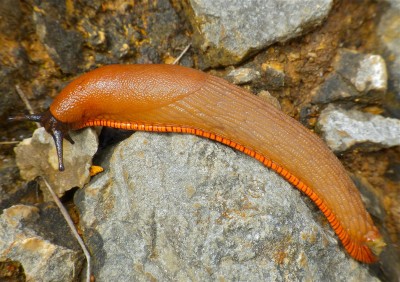
Foto: Bernard DUPONT, commons.wikimedia.org CC BY-SA 2.0
Habitat:
Spanish slug (Arion lusitanicus) prefers shady, moist habitats, deciduous forests, parks, meadows, and gardens. The slug is nocturnal, easy to observe at dusk or during rain.
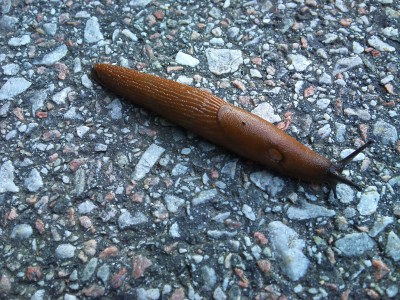
Foto: Jin Zan, commons.wikimedia.org CC-BY-SA-4.0
Influence:
Ecology: The slug is a danger to native slug species, due to its larger size, more aggressive behaviour, and speed. Cases of attacks on bird nests, eating of chicks, complete destruction of the clutch are described and investigated. Spanish slug (Arion lusitanicus) causes a significant lesson to farmland, strawberry crops suffer. Indirect damage is the increasing use of chemicals to control slug infestations in private gardens, which affects the quality of groundwater and local shellfish species.
Economy: The main influence is the eating of crops in gardens, parks, and farmland. Crops such as strawberries, potatoes, vegetables and ornamental crops are affected. In the fields, rapeseed, corn, and sunflower are susceptible to slug attacks. Spanish slug (Arion lusitanicus) may contain E. coli bacteria dangerous to human health in its mucus and slug trail. Eating fruits and leaves with traces of slug can be dangerous and is not recommended.
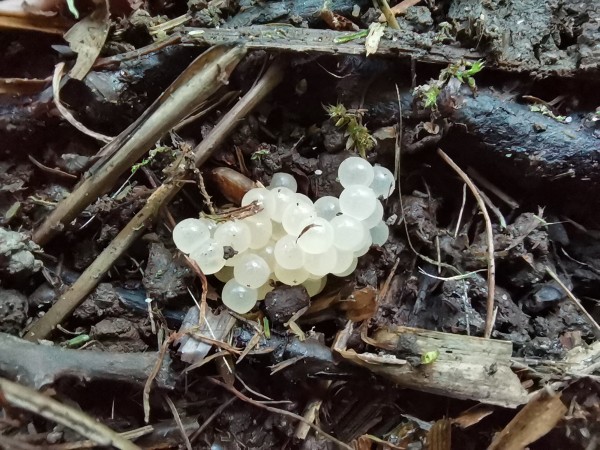
Foto: Dmitrii Plekhanov, Fiskars, Finland
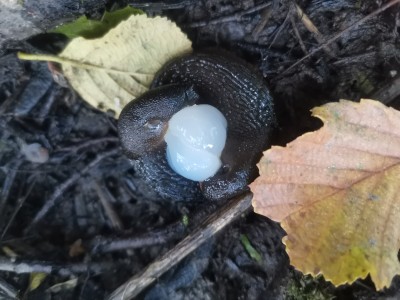
Foto:Dmitrii Plekhanov, Fiskars, Finland
Identification:
Spanish slug (Arion lusitanicus) it's a slug, it doesn't have a shell. Located on the right side of the slug in the front half of the mantle, the hole is used for breathing. The colour is most often brown but can occur from dark brown to black or red yellowish in colour. Young individuals may have dark stripes on the sides. Adults are more uniform in colour. Body colour may depend on age, diet, or environment. The body length of an adult slug is from 7 to 15 cm. A single slug can lay more than 500 eggs, but usually, 200-400 eggs are laid.
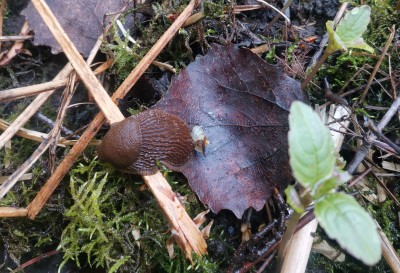
Foto: Dmitrii Plekhanov, Tammisaari, Finland
Prevention:
Arion lusitanicus is an invasive species with the ability to spread rapidly. Long-range distribution is carried out by human means - the transport of soil, compost, or plant material containing adults, juveniles, or eggs. It is necessary to avoid these actions to prevent the transfer of the slug to new territories.
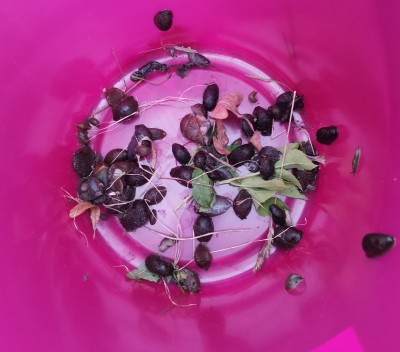
Foto: Dmitrii Plekhanov, Fiskars, Finland
Manage:
Use gloves and tools to catch and destroy the slug.
The manual collection and destruction of the Spanish slug (Arion lusitanicus) have proven to be the most effective method for home gardens. This method is not effective in agriculture and gardening, parks and flattering areas. There are different ways to catch slugs, ranging from homemade cans of beer (or other odorous substances) as bait to various traps.
The slug is active in the morning and evening and is, therefore, lighter at this time. It is important to collect all stages of life - eggs, juveniles and adults. The eggs are arranged in clumps of 10-200 eggs under boards, stones, pots and other objects that create a humid microclimate. Adults may be attracted to smelling substances: beer, rotting fruit, dead slugs.
Littering and removing slugs at the beginning of the season will be effective in reducing the number of eggs laid during the season. Collected slugs can be killed by decapitation (scissors, sharp shovel), pouring boiling water, or freezing in the freezer. Dead slugs are buried or discarded. As mentioned above, dead slugs can be used as bait to attract slugs.
You can download our free leaflet about Spanish slug here
Please contact us if you discovered this species!
Dokument:
Spanish slug leaflet
Spanish-slug-leaflet.pdf | pdf | 612 KB | Senast ändrad: 06.08.2021 13:01:39
